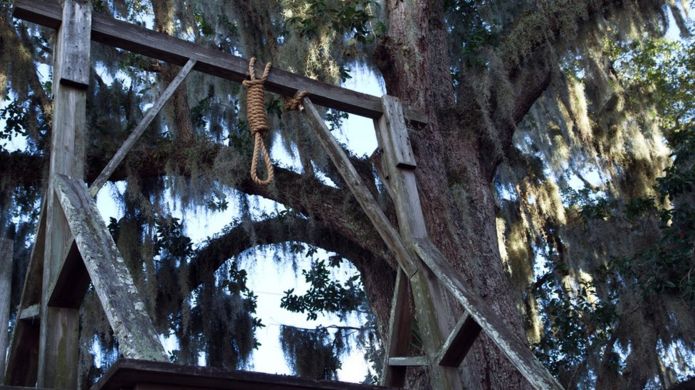
Luther Holbert, an African-American citizen, was lynched in the town of Doddsville (Mississippi) by a mob accusing him of killing a white squire. It was the year 1904 and the United States lived in full racial segregation.
Holbert was next to a woman who is believed to be his wife. Both were tied to a tree and forced to extend their hands while they were cutting one by one the fingers that were distributed among the crowd as a kind of souvenirs .
Then they cut off their ears, beat them and used a large corkscrew to cutholes in their bodies , taking out large pieces of meat. Finally they were thrown into a bonfire where they died burned.
While they were tortured and murdered, the crowd of men, women and even white children who witnessed their lynching ate stuffed eggs and drank lemonade and whiskey with the same relaxed attitude as those who attend a picnic.
More than 4,400 African-Americans were lynched in the United States between 1877 and 1950 , according to the Equal Justice Justice Initiative (EJI).
This nongovernmental organization based in Alabama conducted a study called "Lynching in the United States: confronting racial terror," in which they found about 800 cases of deaths of this type that had not been recorded so far.
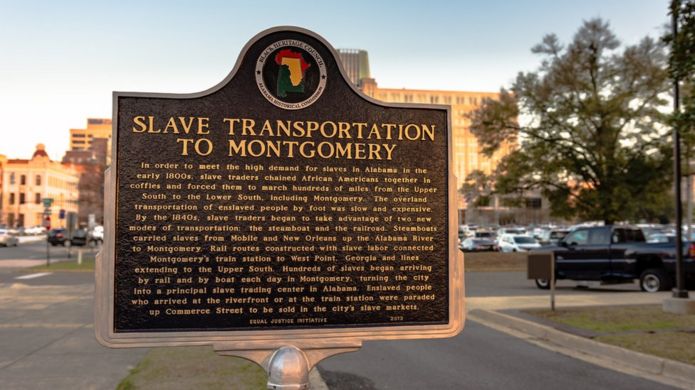
The research focused on 12 states in the southern United States and focused on those cases executed with impunity, often in public places and in broad daylight, in communities where there was a justice system that worked well, at least for whites .
This marked differences with the lynchings that occurred in places without law, or those that affected other minorities such as the Asian or the community of Americans of Mexican origin.
It is a phenomenon of the history of the United States about which little is spoken, but that from next April 26 will be remembered with the inauguration of the National Monument for Peace and Justice in Montgomery (Alabama).
Tragic show
Deaths like Holbert's were not strange during what historians have called "the era of lynchings," which lasted until the middle of the 20th century, but which had its heyday between 1890 and 1930, according to Stewart Tolnay, professor emeritus of Sociology at the University of Washington, at BBC World.
" 3,000 (people) will burn a Negro", said in June 1919 a headline of theNew Orleans State ; "John Hartfield will be lynched by a crowd of Ellisville at 5 pm today," read in a copy of the Daily News of Jackson (Mississippi), of the same period.
"The cases in which lynchings were advertised in the newspapers are a few, although they involved some of the horrific events with the largest crowds." More frequent were cases in which small masses arrested and lynched someone they allegedly allegedly had committed some kind of crime, "says Tolnay, who has published two books and numerous academic articles on the subject.
"Most of them were not lynch-shows but rather they were routine and silent things," he adds.
The fact that these deaths could be announced in the press in advance shows that these were not impulsive actions carried out by an enraged mob. Despite this, it was very rare that lynchers were prosecuted.
Unequal in the face of death
Although white citizens were also lynched, the deaths of African-Americans were much more numerous. Between 1882 and 1889, the proportion of victims was 4 blacks for each target ; between 1890 and 1900 it was 6 to 1; while thereafter it increased to 17 to 1.
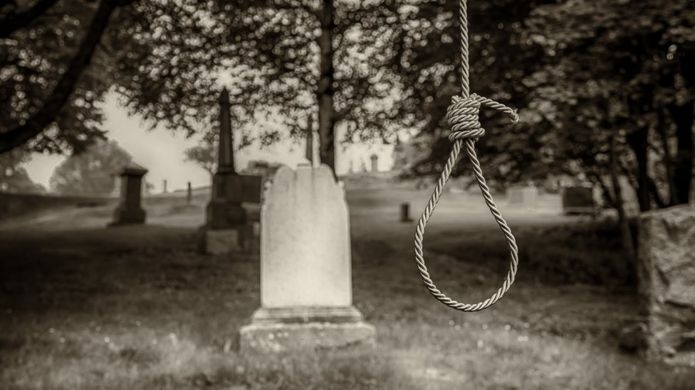
Tolnay points out that usually whites who were lynched were among the most marginalized members of their community and that, in any case, they were not subject to the harsh tortures to which blacks could be subjected.
The causes that could lead to lynching also varied according to race.
According to the EJI study, 30% of African-Americans killed by mobs had been charged with murder and 25% for sexual assault.
"The definition of rape from a black to a white one in the South was incredibly broad and did not need to be alleged the use of force because white institutions, laws and most of the whites rejected the idea that a white woman could or would willingly consent to have sex with an African-American, "says the EIJ.
Other hundreds of blacks lost their lives when they were singled out for causing fires, for robbery or simply for "vagrancy", made by those who -if found guilty- a court would not have applied the death penalty.
But there were even more trivial accusations.
According to the EIJ, the African-American Jesse Thornton was lynched in Luverne (Alabama), in 1940, for referring to a policeman by name without first using the title of "lord" .
The same fate befell Jeff Brown in Cedarbluff (Mississippi) in 1916 for accidentally tripping over a young white woman as he ran to catch the train, as well as Private Charles Lewis, in 1918, lynched in Hickman (Kentucky) for refusing to empty his pockets while he was wearing his military uniform.
" The whites were never lynched for the trivial reasons why they killed the blacks and usually they were not subjected to torture," says Tolnay, who clarifies that cases of extreme violence against victims represented around 10% of the total.
Caste society
The "era of lynchings" had its epicenter in the southern states of the United States and began in the decades that followed the end of the civil war and the formal declaration of the end of slavery, which occurred in 1865.
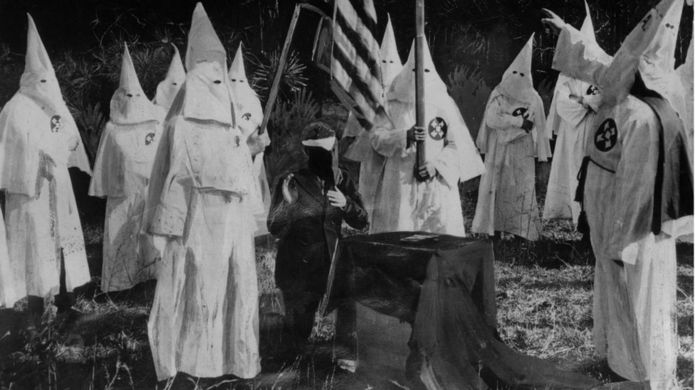
For researchers it is not a coincidence.
"After the civil war there were some 4 million black slaves who became free people and competed in the economies of the southern states with whites," Tolnay says.
"They were threatened until they were completely deprived of political participation rights around the year 1900 and the south was governed by the racial caste system, in which there was a clear line separating the" superior white race "from the" race ". subordinate black race ".
" The rich whites were the elite and the poor whites used the lynching to reinforce that system of racial castes and reduce the chances of social ascension of the black Southerners," he adds.
The expert indicates that, although almost all the victims had been accused of some type of fault and, sometimes, were taken by the mobs of the courts or prisons -even without having been judged-, this was not a matter of justice popular before a dysfunctional system.
"There was a perfectly adequate criminal system that could take care of the criminals, whether they were white or black." The lynching of the blacks had a different objective: to send a very clear message to the black community that there were limits to their upward mobility , "he says. Tolnay

The EJI emphasizes that these deaths were not the result of the action of a few extremists, but were violent public acts that involved the participation of an entire community and that, in general, were tolerated by the authorities and those responsible did not face any type of legal consequence.
"The lynchings were acts of racial violence that were at the center of a systematic campaign of terror that perpetuated and supported an unjust social order, these lynchings were terrorism," the organization said in its report.
Shame or business?
But how was this practice extinguished?
The lynchings were one of the causes of the massive migration of some 6 million African-Americans who between 1915 and 1970 opted to move to the north of the country, where they settled in ghettos.
That redistribution of the population reduced the availability of cheap labor in the south, something Tolnay said may have convinced southern elites of the need to make changes.
"The lynchings became shameful to the south as the economy developed in those states, the white elite tried to attract foreign capital, so the image of the south had to change, this was a brutal, frightening practice. inhuman that did not help, "says the expert.
Thus, the phenomenon was gradually extinguished but without, according to the EIJ, there was a process of reconciliation through the truth as has happened in Germany with the Holocaust or with apartheid in South Africa.
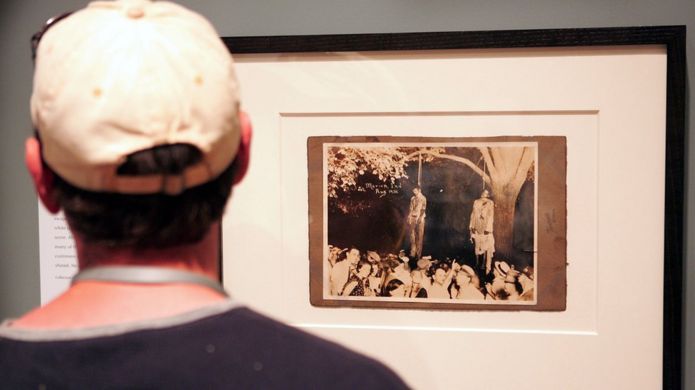
"If I ask: say the name of an African-American lynched between 1877 and 1950, most people can not mention anyone, thousands of people died but they can not name one, why? "Bryan Stevenson, founder of the EJI, told CNN about the causes to promote the creation of the National Monument for Peace and Justice.
With the use of artistic resources, sculptures and designs hope to put in context the history of racial terror in the country.
They will include more than 800 steel memorials two meters high, one for each US county where an African-American was lynched , in which the names of the victims will be engraved.
In addition, scattered throughout the extensive place there will be replicas of each of those monuments that the EJI hopes to deliver to the counties that want to exhibit them to remember in their own territories the dark history of lynchings.
For those responsible for the EJI, see who claim these memorials will be an indicator of how much progress is made in the way of truth and reconciliation.
Respuestas